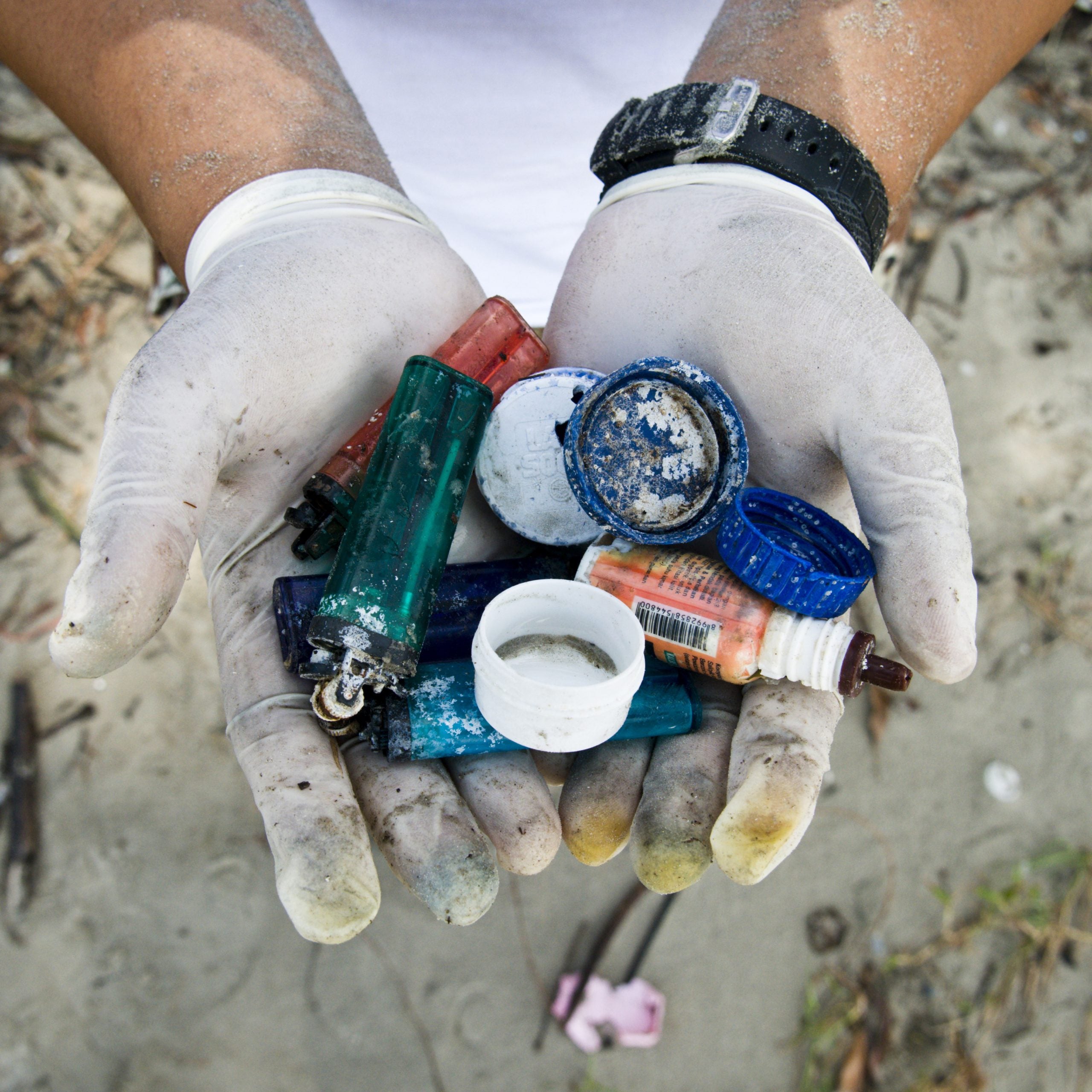took place last Thursday. Today, there are about 5,000 more metric tons of plastic waste in the ocean than there were yesterday. That’s about the equivalent of every San Franciscan heading down to Ocean Beach and chucking a 13-pound trash bag full of plastic into the surf every day. Worse, this is only the amount of plastic coming from the world’s ocean-bound rivers, not total output. (Add other outflow sources, like aquaculture, shipping, and direct dumping, and those trash bags get much heavier.)
This is all published in the journal Nature Communications by , the Dutch foundation that has been on a mission to eliminate half of the so-called by 2020.
The Cleanup’s study quantifies, for the first time, global plastic input from rivers into oceans. Lead researcher Laurent Lebreton, along with the Cleanup’s founder Boyan Slat and four other co-authors, looked at 182 countries and 40,760 ocean-bound rivers, crunching data on population density, mismanaged plastic waste, and natural and built drainage patterns around those rivers. They also looked at seasonal patterns, determining the different frequencies of input throughout the year. According to their findings, just 20 of those rivers contribute two-thirds of total plastic input. The worst polluters are the , in China, followed by the , in India.
“[The paper] is an important aspect of our trying to get the best possible picture of the problem that we are trying to solve,” Lebreton told me in an email, “and that so far has only been sparsely studied and described.”
While the paper’s statistics are staggering, they’re not surprising, given ever-intensifying coverage of the . (You’ve heard the one about , right?) What was not anticipated is that the Cleanup broached the subject of plastic emissions from rivers at all.
[The study]looked at 182 countries and 40,760 ocean-bound rivers, crunching data on population density, mismanaged plastic waste, and natural and built drainage patterns around those rivers.
Since 2013, the Cleanup has grown to a staff of 65, which has been focused on Slat’s original vision: a 62-mile-wide boom moored in the Pacific, which would collect plastic flotsam and store it for retrieval and, eventually, recycling. Just last month, the for the project, raising $21.7 million from high-profile donors like Silicon Valley titans and .
The lucrative 2017 campaign, coupled with the Cleanup’s announcement days later that it would start extracting plastic from the Pacific within the next 12 months—and have half of the Garbage Patch cleaned up in just five years time—reignited criticism [[CRITICISM REP BELOW]] from the scientific community, which has long accused the foundation of approaching the ocean plastics crisis completely wrong.
“My criticism has been [the Cleanup’s] lack of pragmatism and willingness to listen to the science and focus on upstream mitigations to solve the problem,” Marcus Eriksen, cofounder of the and outspoken critic of the Cleanup, wrote in an email to me last week. He was writing in-between events at the , which was held at the United Nations, in New York. The Cleanup, Eriksen continued, has been “hell-bent on putting that giant net in the middle of the Pacific when most scientists and environmentalists agree it’s not a good idea.” Like most other critics, Eriksen points to —the broken-down particles of larger plastics that can choke the digestive tracts of birds and fish—which are difficult to capture and largely elude surface boom systems like the Cleanup’s.
Eriksen also worries that the Cleanup’s new paper could work against the effort to change the governmental policies on land that are exacerbating the plastic pollution crisis. “There exists the potential that [the plastics industry] will look at this paper and use it to justify blaming the consumer for littering, and cities for not managing their plastic trash, and continue to deflect and reject any conversations about eliminating high polluting throwaway products or regulating smarter design standards.” But, Eriksen concedes, the fact that the Cleanup has acknowledged the problem of plastic pollution sources is a step in the right direction.
In response to the question of whether this paper is a direct response to critics like Eriksen, with whom Lebreton has worked in the past, Lebreton said, “We did not need any specific advice to do this. The initial motivation was to work on designing better sources for our oceanic model.” He went on, “For our work to be successful, we need to understand how plastic pollution flows around the world, [and] better mapping its sources is a logical part of that work.”
I was reminded of something Slat had told me last June, when I joined him on the North Sea for the launch of the Ocean Cleanup’s first prototype of Slat’s boom. I had asked him about the blowback from Eriksen and others. “It’s not either or,” he had said agitatedly. “We should do both.” So, was anything in the works? Always careful to keep the Cleanup’s plans close to his chest, Slat suggested there wasn’t, which I remember thinking was unfortunate. But, he added, “I think eventually we’ll be able to develop spin-off systems of what we’re doing in the ocean, which can go closer to land, or maybe in rivers.” In fact, at that moment, the paper was well in the works.


